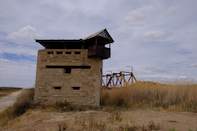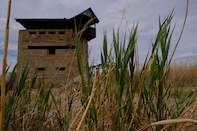Geelbek River Railway Bridge
The Boer War Blockhouse located in Laingsburg at the Geelbek River railway bridge was built in 1902 by the British. In 1965, this guard tower, used as a defense against the Boers, was declared a National Monument.

Shelter for the Troops
Blockhouses were sturdy structures with a double function: strategic defense against the warring opposition and shelter for the troops stationed in the vicinity. These formidable buildings were placed near bridges, as is the case with the blockhouse in Laingsburg, and at standard intervals along railway lines.
Later this form of boundary protection doubled as a way of limiting the movements of the Boers across the warring countryside. The seemingly unremarkable blockhouse, was granted the status of National Monument in 1965, when it was declared a heritage site - it marks an unstable time when South Africa was in the midst of the second Anglo-Boer War of 1899, also known as the South African War.

The Laingsburg area saw plenty of action during the Anglo Boer War, as a result several Blockhouses were constructed in the region as a means to manage the movements of the Boers, who brought warfare and strife into the territory controlled by the British Colonial Authorities.
In the midst of the war, the distinguished Boer commandant, Gideon Scheepers, was caught in the area and later executed in Graaff-Reinet by the British.